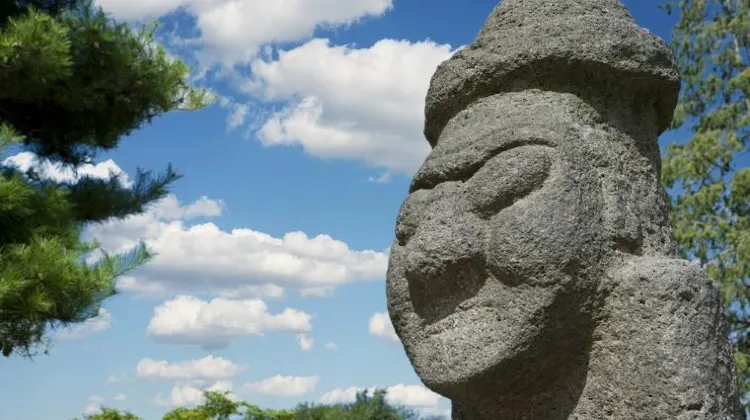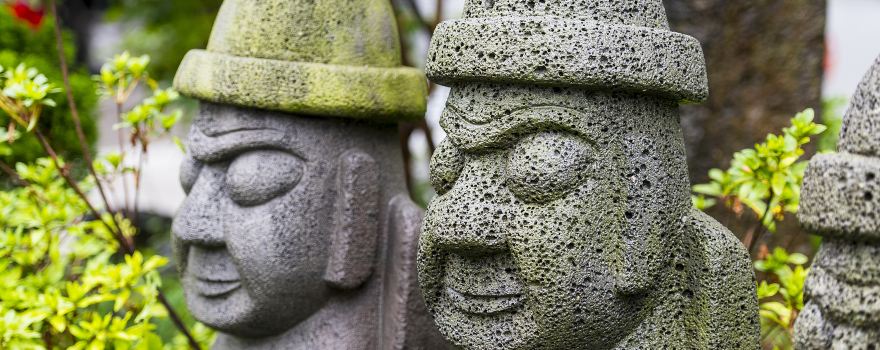
Wondering when is the best time to visit Jeju Island? You’re at the right place!
First, you've made an excellent choice! Jeju Island, located off the southern coast of South Korea, is a breathtaking destination that offers stunning natural beauty, rich culture, and unique experiences. To make the most of your visit, it's important to choose the best time to explore this enchanting island.
In this comprehensive guide, we'll walk you through the ideal seasons, weather conditions, and attractions for each time of the year, ensuring that you have an unforgettable experience on Jeju Island.
Best Time To Visit Jeju Island

There are distinct seasons at Jeju Island and each season on Jeju Island presents unique opportunities and experiences.
Whether you prefer the blooming blossoms of spring, the sun-soaked beaches of summer, the vibrant foliage of autumn, or the tranquil landscapes of winter, Jeju Island has it all.
Consider your interests, weather preferences, and desired activities when choosing the best time to visit. Plan ahead to make the most of seasonal events and festivals, and prepare accordingly for any specific weather conditions.
| Season | Month Duration | Weather Conditions |
| Spring | March to May | Mild temperatures, blossoming flowers |
| Summer | June to August | Warm temperatures, sunny skies, ideal for beach activities |
| Autumn | September to November | Mild temperatures, vibrant autumn foliage |
| Winter | December to February | Chilly temperatures, tranquil landscapes |
Remember, Jeju Island's charm is not confined to a single season. Whenever you choose to visit, you'll be greeted with the island's natural beauty, rich culture, and warm hospitality that will leave a lasting impression.
Let’s dive in!
Spring: Blossoms And Mild Weather

Spring is undoubtedly one of the best times to visit Jeju Island. From March to May, the island comes alive with vibrant cherry blossoms and colorful flower fields, creating a picturesque backdrop for your adventures.
The temperature during this time ranges from a pleasant 10°C to 20°C (50°F to 68°F), making it perfect for outdoor activities like hiking, biking, and exploring the island's natural wonders.
The Seogwipo Canola Flower Festival, held in April, is a must-visit event during the spring season. The festival showcases vast fields of golden yellow canola flowers, providing a stunning sight for nature enthusiasts and photography lovers.
Don't forget to capture the mesmerizing views of the famous Jeju Cherry Blossom Road, which transforms into a dreamlike tunnel of pink petals.
Suggested activities for Spring:
- Visit the Jeju Cherry Blossom Road, a famous spot for capturing stunning photos of the cherry blossoms in full bloom.
- Explore the stunning fields of yellow canola flowers during the Seogwipo Canola Flower Festival held in April.
- Take a leisurely stroll through Hallim Park, where you can admire a wide variety of spring flowers, including azaleas and magnolias.
Summer: Sun, Sand, And Water Sports

If you're a beach lover and enjoy basking in the sun, summer is the best time to visit Jeju Island. From June to August, the island experiences warm temperatures ranging from 20°C to 30°C (68°F to 86°F).
The clear blue skies, pristine beaches, and refreshing sea breeze create an inviting atmosphere for water activities, such as swimming, snorkeling, and scuba diving.
Hyeopjae Beach and Hamdeok Beach are popular choices for sun-seekers, offering soft white sand, crystal-clear waters, and mesmerizing coastal landscapes. These beaches also provide excellent opportunities for water sports enthusiasts, with options for jet skiing, paddleboarding, and banana boat rides.
Suggested activities for Summer
- Relax and soak up the sun at Hyeopjae Beach or Hamdeok Beach, both known for their soft white sand and crystal-clear waters.
- Explore the underwater world by going snorkeling or scuba diving at popular diving spots like Jungmun Beach or Seogwipo Maeil Olle Market Beach.
- Take a thrilling jet ski ride or try your hand at paddleboarding along the picturesque coastline.
Autumn: A Tapestry Of Colors

Autumn is a magical time to visit Jeju Island when the landscape is adorned with vibrant hues of red, orange, and gold. From September to November, the island experiences mild temperatures ranging from 15°C to 25°C (59°F to 77°F), creating comfortable weather for outdoor exploration.
Seopjikoji, a scenic coastal area, is a must-visit spot during the autumn season. The combination of rocky cliffs, emerald-blue waters, and colorful foliage creates a breathtaking panorama. Be sure to embark on a hike up Hallasan Mountain, to witness the stunning autumn foliage from above.
Suggested activities for Autumn
- Embark on a hike up Hallasan National Park, scale the highest peak in South Korea, and witness the breathtaking autumn foliage from above.
- Explore the scenic coastal area of Seopjikoji, which offers stunning views of rocky cliffs, emerald-blue waters, and colorful foliage.
- Visit the Jeju Stone Park, where you can admire unique rock formations amidst the vibrant autumn colors.
Winter: Tranquility And Sublime Landscapes

While winters on Jeju Island can be chilly, with temperatures ranging from 0°C to 10°C (32°F to 50°F), it offers a unique and serene experience for travelers seeking tranquility and untouched landscapes. The island is less crowded during this season, allowing you to enjoy its natural wonders in peace.
Visit Manjanggul Cave, a UNESCO World Heritage site, to marvel at the stunning lava tube formations. The cave's underground pathways, adorned with stalactites and stalagmites, create an otherworldly atmosphere. Additionally, don't miss out on the Seongsan Ilchulbong Peak, also known as Sunrise Peak, which offers breathtaking views of the sunrise over the dramatic volcanic crater.
Suggested activities for Winter
- Explore the mesmerizing Manjanggul Cave, a UNESCO World Heritage site, known for its stunning lava tube formations.
- Capture the dramatic sunrise over the volcanic crater at Seongsan Ilchulbong Peak, also known as Sunrise Peak.
- Visit the Jeju Glass Castle, where you can appreciate exquisite glass art installations while escaping the winter chill.
Do check out our Jeju Island travel guide for more ideas and things to do when you’re there!
FAQs: Best Time To Visit Jeju Island
Best Time To Visit Jeju Island Conclusion
In conclusion, the best time to visit Jeju Island depends on your personal preferences and the experiences you seek.
Spring offers blooming flowers and mild weather, while summer invites you to enjoy the island's beautiful beaches and water activities. Autumn enchants visitors with its colorful foliage, and winter provides a serene and tranquil atmosphere. Consider the weather, crowd levels, and seasonal attractions when planning your trip to ensure an unforgettable experience on this captivating island.
So pack your bags, prepare for an adventure, and get ready to make memories that will last a lifetime on Jeju Island.
